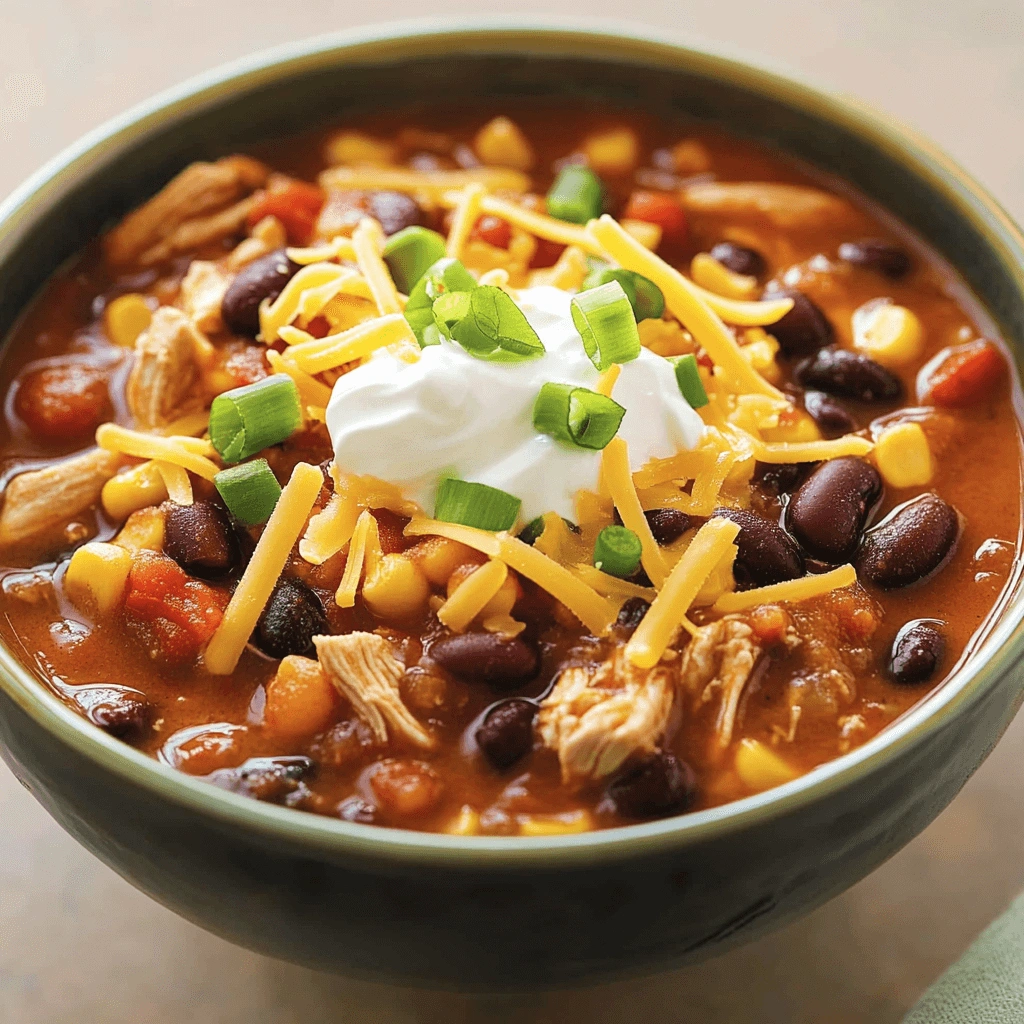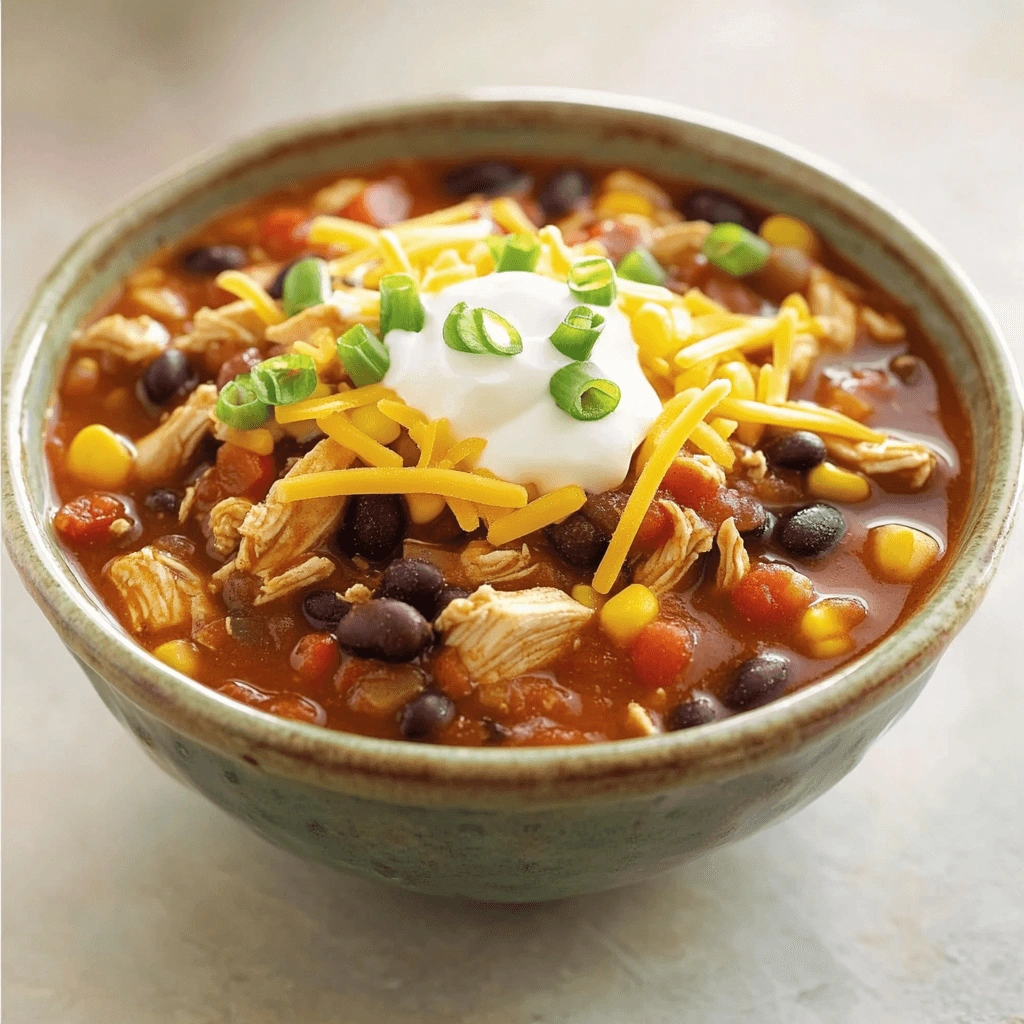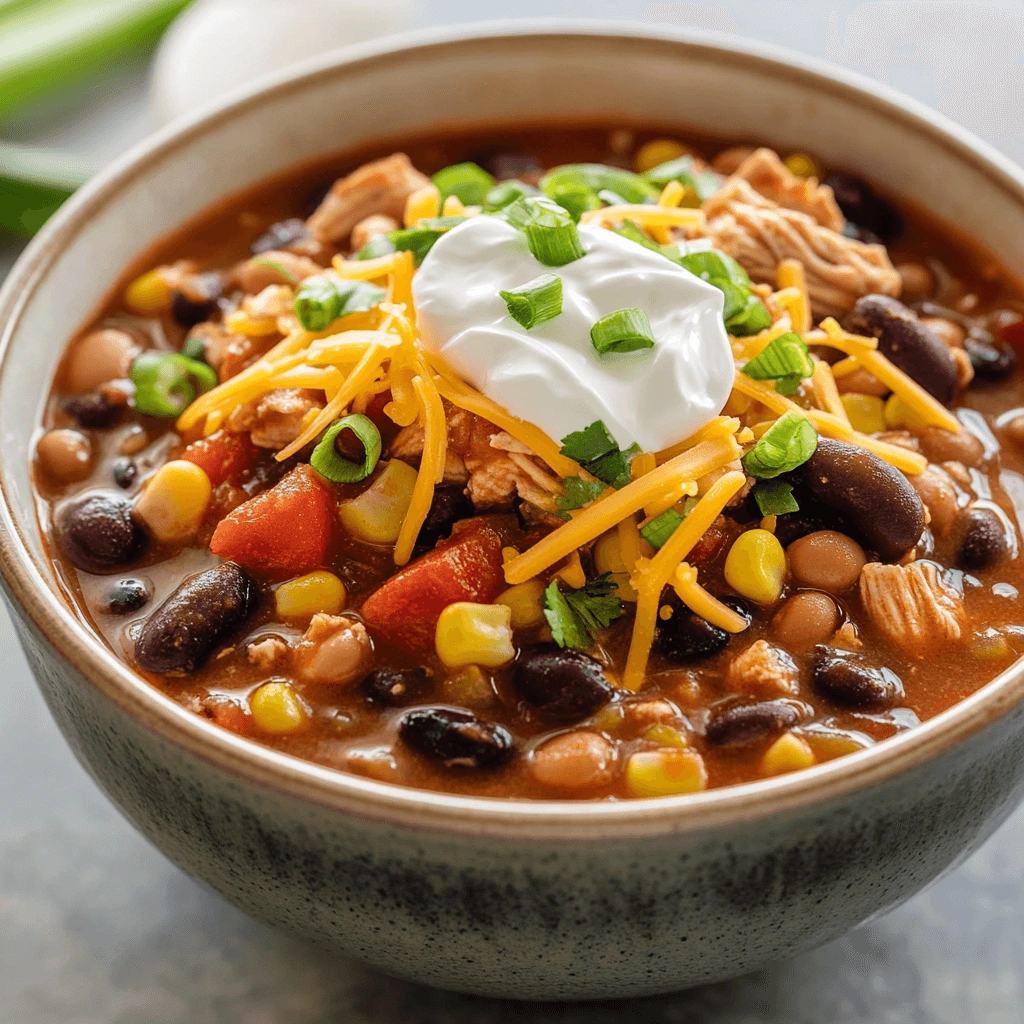Why Is My Taco Soup So Watery? An Introduction
Taco soup is a beloved comfort food that combines rich flavors, hearty textures, and the satisfying warmth of a classic soup. However, why is my taco soup so watery? Achieving the perfect consistency can sometimes be challenging. A watery taco soup not only dilutes its taste but also diminishes the overall enjoyment of the dish.
How Consistency Impacts the Enjoyment of Taco Soup
Consistency plays a pivotal role in determining the quality of taco soup. A thick and rich broth envelops ingredients, ensuring a harmonious blend of flavors in every bite. In contrast, a watery soup can feel bland and unappetizing, often leaving cooks wondering, why is my taco soup so watery?
Addressing the Question: Why Is My Taco Soup So Watery?
To answer why is my taco soup so watery, it’s essential to delve into common factors such as ingredient choices, liquid ratios, and cooking techniques. Understanding these key aspects can help transform a watery taco soup into a perfectly balanced culinary delight.
If you’ve faced similar issues with other dishes, explore solutions in Watery Broccoli Casserole: Causes & Fixes.
Common Reasons Why Your Taco Soup Is So Watery
Liquid-to-Ingredient Imbalance
One of the most common causes of watery taco soup is an incorrect liquid-to-ingredient ratio. When there’s too much broth or stock compared to the solid ingredients, the soup loses its hearty texture. Aim for a balance where the liquid coats the ingredients without overwhelming them. For a more flavorful take, you might consider experimenting with combinations like in our Spicy Taco Dip Recipe.
High-Moisture Ingredients
Many vegetables and canned goods contribute additional liquid to the soup during cooking. For instance:
- Tomatoes: Fresh or canned, they release water as they cook.
- Onions and Peppers: These vegetables hold a significant amount of moisture, which can dilute your soup if not prepped properly.
If you’re working with high-moisture vegetables in other recipes, like casseroles, refer to Using Fresh Broccoli Instead of Frozen in Casserole for helpful techniques.
Cooking Mistakes That Lead to Watery Soup
Sometimes, cooking errors can make your taco soup more watery than expected:
- Overboiling: Prolonged boiling prevents the reduction process, which concentrates flavors and thickens the soup.
- Covered Cooking: Using a lid traps steam, which condenses back into the pot, adding extra liquid.
Want to perfect your cooking methods? Check out How to Make Beef More Tender in a Crockpot for additional tips.
Ingredient Factors Behind Why Is My Taco Soup So Watery

Excess Broth or Stock
Adding too much broth is a quick way to end up with watery soup. Start with less liquid than the recipe suggests, adding more gradually to reach the desired consistency. This principle also applies to other comfort foods, such as Chicken Broccoli Rice Casserole.
Undrained Canned Ingredients
If you’re wondering, why is my taco soup so watery, undrained canned ingredients might be one of the main reasons. Many recipes call for canned beans, corn, or tomatoes, and the liquid in these cans can quickly thin out your soup. To prevent this:
- Drain canned beans and corn: Use a strainer to remove any excess liquid before adding them to the soup.
- Check tomato consistency: Opt for diced tomatoes with reduced liquid, or lightly strain regular canned tomatoes to keep the water content in check.
Addressing this simple issue can significantly improve the consistency and prevent your taco soup from becoming watery.
High-Water Vegetables Without Prepping
Another common reason why is my taco soup so watery comes down to high-water vegetables like zucchini, squash, and celery. These vegetables release a surprising amount of moisture during cooking, which can dilute the soup’s consistency. To tackle this:
- Salt and drain vegetables: Before adding them to the soup, sprinkle a bit of salt on the vegetables to draw out their water content, then pat them dry.
- Sauté instead of boiling: Cooking vegetables in a separate pan helps evaporate their water content, reducing the chances of your soup becoming watery.
Taking the time to prep your vegetables properly is a simple yet effective way to solve why is my taco soup so watery and achieve a thick, satisfying texture.
Consider these tips when working with vegetables in other dishes, such as in Essential Ingredients in Sinigang.
The Role of Cooking Techniques in Watery Taco Soup
Overboiling
While boiling is necessary to cook ingredients thoroughly, overdoing it can lead to overly watery soup. To prevent this:
- Simmer your soup gently once it reaches a boil.
- Avoid prolonged boiling, which breaks down ingredients and adds unwanted water.
Skipping Reduction Steps
Reduction is a crucial technique for thickening soups naturally:
- Uncover your pot: Allow steam to escape while simmering, concentrating flavors.
- Stir occasionally: This ensures even cooking and helps liquids evaporate evenly.
How Covered Cooking Impacts Taco Soup Consistency
Cooking taco soup with a lid can trap steam, leading to a waterier consistency. Unless your recipe specifies otherwise:
- Cook uncovered for most of the time.
- Use a lid only during the initial boiling stage, removing it during the simmering phase.
This method is similar to tips provided in Bake or Boil Sweet Potatoes for Casserole.
Adjusting Liquids
When you find yourself asking, why is my taco soup so watery, there are a few quick fixes you can implement right away. One of the simplest solutions is to adjust the liquid content:
- Scoop out excess liquid: Use a ladle to carefully remove some of the broth, particularly if you catch the issue before serving. This helps to restore balance without altering the flavor.
- Add cooked ingredients: Incorporate cooked ground beef, beans, or corn into the soup. These ingredients not only absorb the extra liquid but also add more substance and enhance the overall texture.
These straightforward adjustments can help salvage your taco soup and bring it back to the desired consistency in no time.
For further ideas on ingredient adjustments, check the Taco Soup Fritos Recipe Guide, which provides similar helpful techniques.
Thickening Watery Taco Soup with Cornstarch or Flour
Cornstarch and flour are excellent solutions if you’re wondering, why is my taco soup so watery, as they effectively thicken the soup without altering the flavor.
- Cornstarch slurry: Mix 1 tablespoon of cornstarch with 2 tablespoons of cold water, then stir it into the soup while it simmers to thicken quickly.
- Flour slurry: Similarly, combine 1 tablespoon of flour with water or broth, ensuring it’s lump-free before adding it to the soup.
These simple methods can help transform watery taco soup into a rich and satisfying dish.
Using Pureed Ingredients to Quickly Improve Taco Soup Texture
If you’re wondering why is my taco soup so watery, a natural way to fix it is by using pureed ingredients. Start by removing a cup of cooked beans, tomatoes, or vegetables. Blend them into a smooth puree, adding a bit of broth if needed. Then, return the mixture to the pot and stir thoroughly while heating. This will naturally thicken your taco soup without altering its flavor, creating a rich and satisfying consistency.
This technique is particularly useful in recipes such as Savannah Classics Sweet Potato Casserole.
Preventing Watery Taco Soup from the Start

Measuring Liquids Correctly to Avoid Watery Taco Soup
One of the simplest solutions to avoid asking, why is my taco soup so watery, is to measure liquids accurately from the start. Always follow the recipe closely, but if you’re including high-moisture ingredients like tomatoes or zucchini, it’s wise to add less liquid than recommended initially. You can always adjust later if needed. Using proper measuring tools instead of estimating ensures precision and prevents adding more broth or water than necessary. This small step can make a big difference in achieving the perfect consistency for your taco soup.
Prepping Vegetables and Canned Goods to Minimize Watery Results
Properly preparing vegetables and canned goods is another crucial step. For instance:
- Drain and rinse canned beans and corn: This removes excess liquid that could dilute your soup.
- Sauté vegetables like onions and peppers: This step helps to reduce water content before adding them to the pot.
Building Flavor While Maintaining Consistency
Building flavor without compromising consistency requires thoughtful planning. For example:
- Layer flavors: Start by sautéing aromatics such as garlic and onions with spices.
- Use thickening ingredients early: Add masa harina or crushed tortilla chips at the beginning of the cooking process for the best results.
To see this principle in action, explore What Is Taco Dip Made Of?
Why Is My Taco Soup So Watery and What Thickening Agents Can Fix It
How Cornstarch, Flour, and Masa Harina Help Fix Watery Taco Soup
When it comes to fixing watery taco soup, thickening agents like cornstarch, flour, and masa harina are indispensable. For instance:
- Cornstarch: This creates a glossy finish and thickens quickly without altering flavor.
- Flour: It provides a hearty, rustic texture ideal for thicker soups.
- Masa harina: Not only does this ingredient thicken, but it also adds a subtle corn flavor that complements taco soup.
To learn more about masa harina’s uses, consider recipes like Spicy Taco Dip Recipe.
Creative Uses of Tortilla Chips and Cheese for Thickening Taco Soup
Alternatively, tortilla chips and cheese can be used to thicken soup while enhancing its taste. For example:
- Crushed tortilla chips: Stir them directly into the soup and let them dissolve naturally.
- Shredded cheese: Add small amounts gradually while stirring to avoid clumping.
Choosing the Right Thickening Agent
Choosing the most suitable thickening agent depends on your flavor and texture preferences. For example:
- If you prefer a smooth texture, cornstarch or pureed ingredients are ideal.
- On the other hand, masa harina or cheese works better for added flavor.
For inspiration, consider simple thickening methods from Using Fresh Broccoli in Casserole.
Balancing Flavors in Watery Taco Soup
How Excess Liquid Dilutes Spices
Excess liquid doesn’t just affect consistency—it also dilutes the spice profile of your soup. To counter this:
- Increase seasoning: Add extra chili powder, cumin, or smoked paprika to intensify flavors.
- Use concentrated flavor boosters: For example, mix in bouillon cubes or broth concentrates sparingly.
Boosting Seasonings to Balance Watery Taco Soup
When balancing flavors in watery soup, boosting seasonings is often necessary. For instance:
- Add fresh herbs: Cilantro and parsley can brighten the overall taste.
- Incorporate acid: A splash of lime juice or a few drops of vinegar enhances the flavor balance significantly.
Using Broth Concentrates and Aromatics to Enhance Watery Soup
Finally, broth concentrates and aromatics such as bay leaves and garlic can elevate your soup’s flavor. For best results:
- Use broth concentrates sparingly: These can add depth without over-salting the soup.
- Simmer aromatics in broth: This infuses the soup with rich flavors.
Learn about combining aromatics in dishes like Essential Ingredients in Sinigang.
Why Simmering Is Better Than Boiling for Taco Soup
To address why is my taco soup so watery, simmering instead of boiling is a simple and effective solution. Boiling causes vigorous movement in the pot, breaking down ingredients and releasing extra moisture, which leads to a thinner consistency. Simmering, on the other hand, gently cooks the soup, allowing flavors to blend while naturally reducing the liquid. This method gives you better control over the texture and helps create a rich, perfectly balanced taco soup.
Uncovering the Pot: A Simple Solution for Watery Taco Soup
This method is particularly helpful when reducing the liquid in other recipes, such as Watery Broccoli Casserole: Causes & Fixes.
How Long Cooking Times Help Prevent Watery Taco Soup
In addition to simmering and uncovering the pot, extending the cooking time can help thicken taco soup. Prolonged cooking enables the liquid to reduce and the flavors to concentrate. However, it’s important to monitor the soup closely to avoid overcooking delicate ingredients like beans and vegetables.
If you’re experimenting with cooking times, consider reviewing What Add to Bland Chicken Casserole? for tips on balancing flavor during extended cooking.
Transforming Watery Taco Soup into Something Delicious
These ideas are particularly versatile when working with flavorful broths like those in Spicy Taco Dip Recipe.
Common Mistakes That Make Taco Soup So Watery
Adding Too Much Liquid: A Frequent Cause of Watery Taco Soup
Relying Solely on Canned Ingredients Without Draining
Canned beans, corn, and tomatoes often contain excess liquid, which can make your soup watery if not drained properly. To avoid this, always rinse and drain canned goods before adding them to your recipe. For more guidance on working with canned ingredients, read What Is Taco Dip Made Of?
Skipping Key Cooking Steps That Prevent Watery Taco Soup
Skipping essential steps, such as simmering uncovered or sautéing vegetables, often leads to excess water in your taco soup. Taking the time to follow these processes ensures that your soup is both flavorful and has the right consistency.
For recipes that emphasize step-by-step preparation, review Bake or Boil Sweet Potatoes for Casserole.
Conclusion: Mastering Taco Soup Consistency
Recap of Why Taco Soup Turns Watery and How to Fix It
The question of why is my taco soup so watery often has simple answers: too much liquid, high-moisture ingredients, or missing crucial cooking steps. These common mistakes can easily dilute the flavors and texture of your soup. However, by identifying these issues and addressing them, you can take proactive steps to fix your current batch or prevent the problem in future recipes. Understanding these pitfalls is the key to achieving a perfectly thick and satisfying taco soup every time.
Key Takeaways to Prevent Watery Taco Soup in the Future
To avoid watery taco soup, remember these key points:
- Measure liquids carefully: Start with less and adjust as needed.
- Prep ingredients properly: Drain canned goods and sauté vegetables to reduce moisture.
- Cook with intention: Simmer uncovered and allow adequate cooking time for proper reduction.
Final Tips for Perfecting the Balance in Taco Soup
Achieving the perfect taco soup consistency requires attention to detail and a willingness to adapt. Whether it’s through adjusting liquids, thickening with cornstarch, or repurposing leftovers, these strategies will help you master this comforting dish. For more detailed guidance on improving soup textures and other cooking techniques, visit Bon Appétit Cooking Tips & Techniques for expert advice.
With these strategies, you’re now fully equipped to create taco soup that’s flavorful, hearty, and perfectly textured every time.


3 thoughts on “Why Is My Taco Soup So Watery? Perfect It Now!”